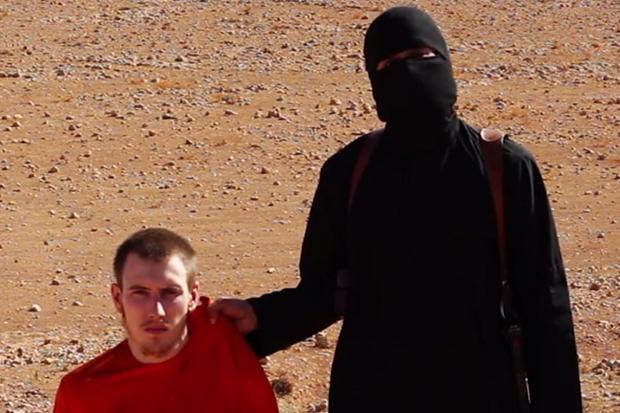ISIS continues its state-building project unabated
Dr. Theodore Karasik
Sunday, 23 November 2014 /Al Arabiya
Despite coalition air strikes, ISIS, or the Islamic State (IS), is a very dangerous group set on state development. It is not terrorist nor insurgent; ISIS represents a group that mixes extremism with state-building designs. They are mercantilism-fundamentalists if you will. They have their own notion of a state and all the functions of such a state. ISIS plans to produce its own currency soon although its viability is subject to debate. Importantly, ISIS is searching for expansion through a variety of tools that involve violence obviously but also by gaining followers through its social media campaign and accessing tribal networks for state building. Its program of “vilayaat” or “emirates” development, in some minor cases, is beginning to take shape throughout the MENA region and is likely to grow through local grievances and appeals to those who are outcasts in their own countries.
The seven vilayaat
A vilayet is an administrative unit usually translated from Arabic to English as a province or governorate within a state. Currently, ISIS has five vilayaat in their state administrative organization. These are: Salahuddin, Kirkuk, The South/Middle Euphrates, The Border (Syria-Iraq), Anbar, and Baghdad. Most appear to be functioning through the take-over of government services, schools, health care facilities, and courts. According to a Middle East-based banker, a few banks under the vilayat system still maintain contacts outside the “Caliphate.” In other words, “business as usual.” Thus, the Islamic State is not surrounded by a wall to keep commerce and people in nor out in the field of “Caliphate” economics.
The announcement of the Islamic State by “Caliph Ibrahim” on the first day of the Holy Month of Ramadan this year is part of the evolution of recognizing that now is the time to announce the vilayat. These vilayaat build alternative government structures and are attractive recruitment tools across the region and beyond because they offer “a new vision.” There appears to be a growing tendency to announce such emirates and then quick denials. These denials appear to be a test for the local strength of vilayat formation. A little over a week ago, Baghdadi’s audio recording in the wake of the air strikes that reportedly wounded him revealed ISIS’ plans ”for building veleyat and the naming of wulat [governors] to the lands of al-Haramayn [Saudi Arabia], Yemen … to Egypt, Libya, and Algeria … We ask for all those closest to declare bayat [allegiance] to these wali [governor]. In other words, the model for state development is being tried and tested in the Levant for export to other parts of North Africa.
“The announcement of the Islamic State by “Caliph Ibrahim” on the first day of the Holy Month of Ramadan this year is part of the evolution of recognizing that now is the time to announce the vilayat.
”
Dr. Theodore Karasik
As part of vilayat building, it is important to recognize that ISIS uses bayat to create local alliances with tribes with extremist leanings. We have seen how ISIS uses its local influence, probably with financial payout from their huge financial reserves from oil exports, taxation, and the illegal selling of antiquities, to seek alliances among tribes along the Euphrates and Tigris rivers in Syria and Iraq. Now ISIS representatives are using bayat in Libya and Egypt in order to place communities under their control. This economic model is easily exportable, with or without oil reserves, to other parts of the region where Caliphate expansion is planned by the ISIS hierarchy.
Popular pledges of bayat on the local level construct a more interconnected area of governance out of the territorial patchwork under ISIS control. The unique ability for ISIS to traverse rival tribal coalitions is known as “blood pledges” (bayat damm) in order to forge blood-based alliances. Of course, tribes will use these so-called legal instruments to their own liking but ISIS knows how to make the most out of such an arrangement, especially execution for those who do not follow the practice. This practice has been demonstrated repeatedly in the so-called “Caliphate.”
Baghdadi’s targeting of North Africa, as mentioned in his above comment, for vilayat development is of immediate concern in Libya and Egypt.
Darna vilayat
In Libya, Darna serves as an example because it is reportedly the first ISIS enclave on the continent. The tribes – perhaps consisting of Misrata, Al-Awaqir and Obeidat tribal units – are susceptible and in early October some members announced the Barka vilayat where hundreds of tribesmen declared their bayat to Baghdadi as the “Caliph.” All those against the Barka vilayat are being hunted down and executed. There are also battle-hardened ISIS fighters returning to Darna from the Levant to help build the military force necessary to support the Barka vilayat and ultimately corridors of governance. A Libyan-based analyst commented that “Libya Dawn is working with the Barka vilayat to establish Mitiqa airport as an air gateway for the Caliphate.” Here, tribal alliances are helping ISIS achieve its goals of acquiring infrastructure by force.
This acquisition process of logistic hubs by ISIS in the Levant is seen most notably in attempts to grab the international airport in Baghdad. Make no mistake, ISIS wants airfields for mobility purposes.
Sinai vilayat
In Egypt, the Sinai vilayat is apparently taking shape much to the chagrin of the Egyptian President al-Sisi’s government. Egypt’s most extremist group, Ansar Bait al-Maqdis, proclaimed its loyalty to ISIS. For ISIS, the Sinai Peninsula is important both symbolically as well as strategically. Mohammad Haydar Zammar is thought to be one of the ISIS leaders who has been negotiating with Ansar Bait al-Maqdis since early 2014.
Although the Sinai and Ansar Bait al-Maqdis are mostly Bedouin, Bedouin society operates very similarly to tribal societies but are of lower class and standing. Thus, Ansar Bait al-Maqdis has made it a practice to target and kill leading tribal sheikhs and authorities from the al-Armilat, al-Manayaa and Sawarka tribes. Thus, these individuals are trying to co-opt local tribal leaders to ISIS authority models and make governability possible. The Sinai Bedouin who belong to the IS affiliate see IS as their model to gain local power and prestige.
Overall, there are now seven vilayaat of the Caliphate, and more should be expected. The MENA region is ripe for this type of governance based on tribal networks. The worse news is that the model is exportable outside of MENA. With other extremist groups declaring bayat to ISIS, there is the high probability that the number of vilayaat will grow. Thus, governments where these ISIS-dedicated groups operate need to undermine the very individuals who are promoting alternative state structures. The weakness of central governments to control their peripheries needs to be reversed. Don’t be surprised if a vilayat comes to a neighborhood near you!




















